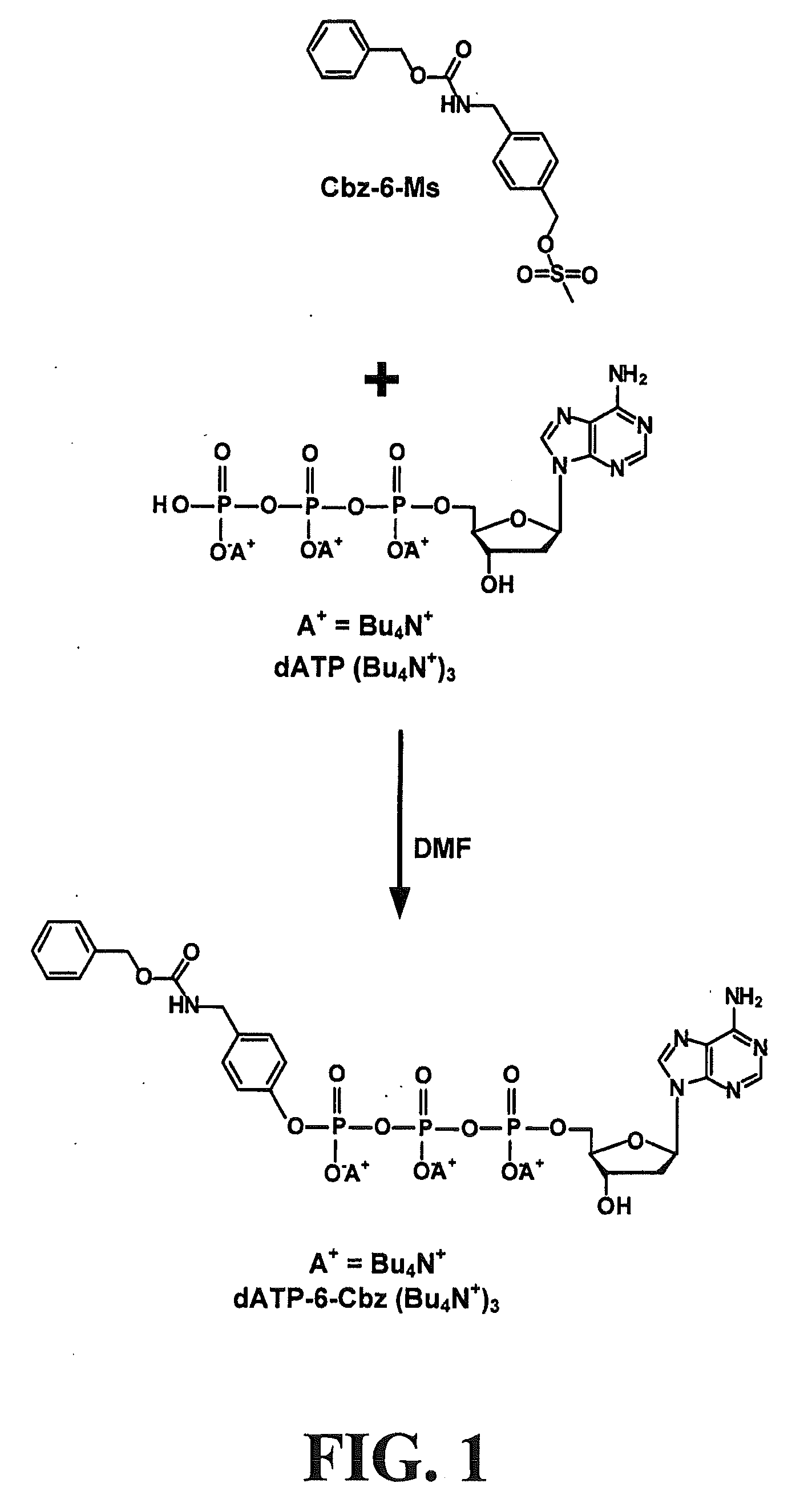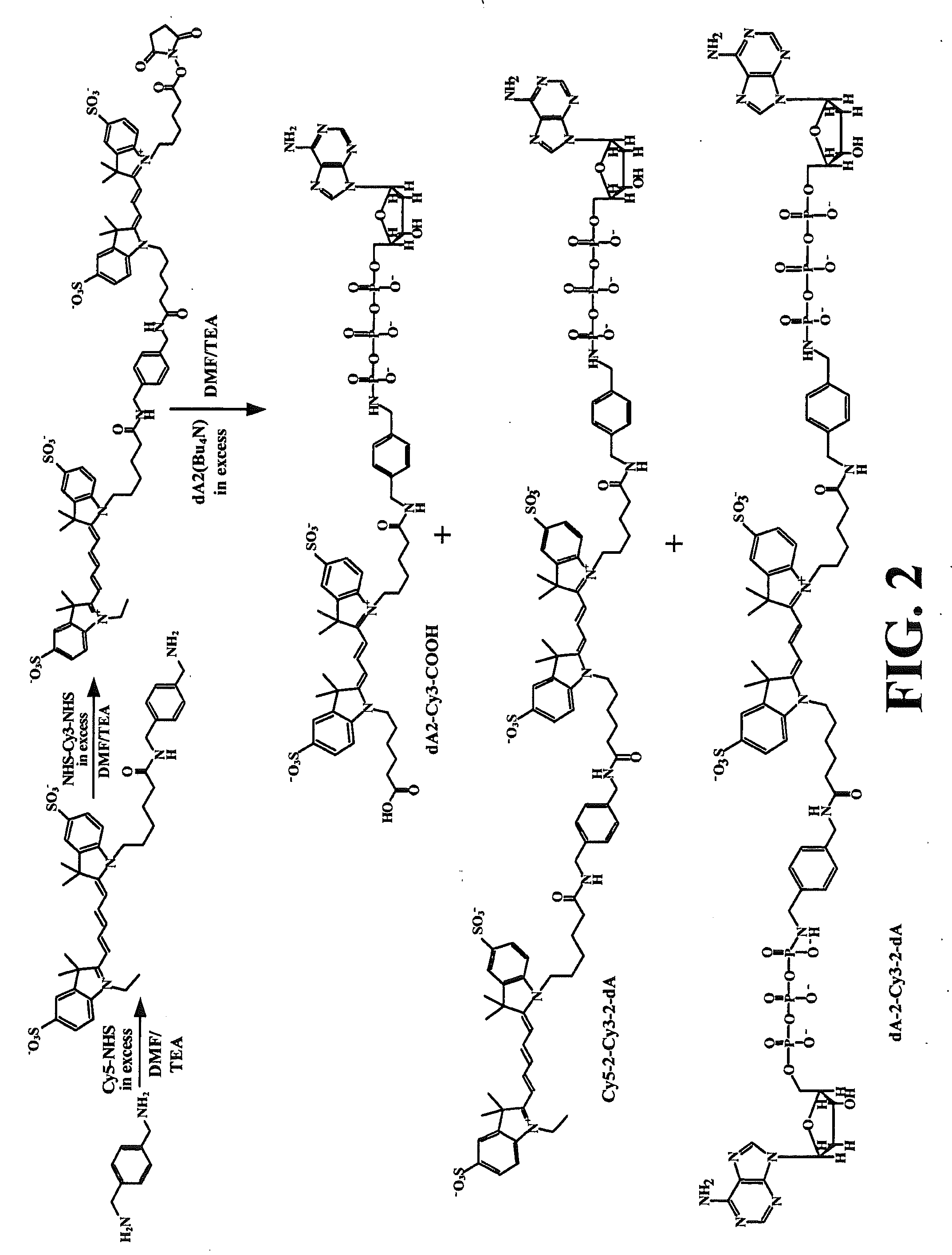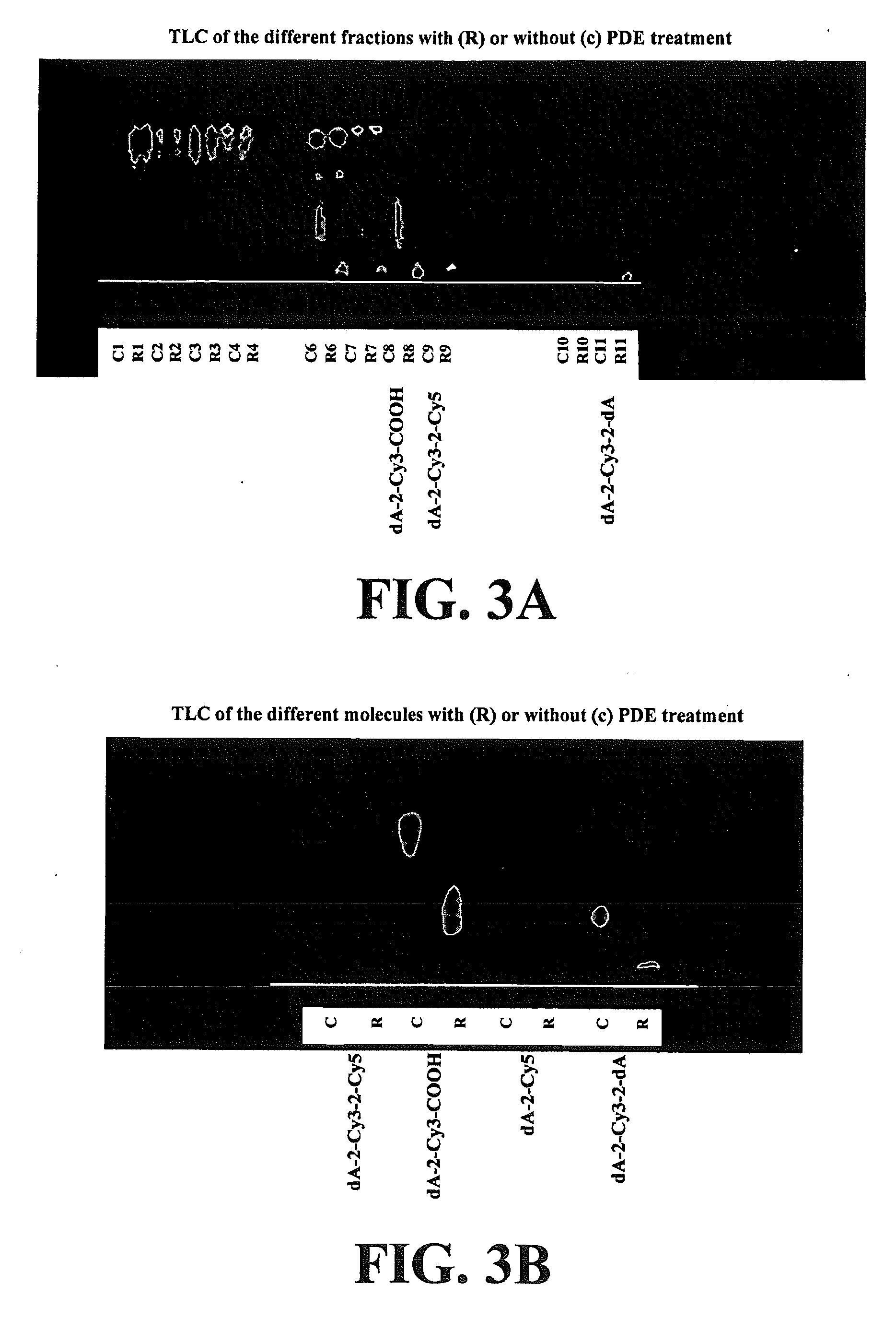Methods for preparing modified biomolecules, modified biomolecules and methods for using same
- Summary
- Abstract
- Description
- Claims
- Application Information
AI Technical Summary
Benefits of technology
Problems solved by technology
Method used
Image
Examples
example 1
[0172]This example illustrates a general method for preparing phosphate modified biomolecules, with DATP as the biomolecule and Cbz-6-Ms as the modifying agent, where 6 represents linker 6 or 1-hydroxymethyl,2-aminomethylbenzene.
[0173]Referring now to FIG. 1, the compound Cbz-6-Ms (20 μmol) was reacted with DATP (Bu4N+) (5 μmol) in DMF (0.4 mL) at room temperature (r.t.) overnight. The reaction mixture was concentrated to dryness on a rotary evaporator and redissolved in water (1 mL). Centrifugation removed the pellet, while the aqueous solution was subjected to HPLC purification (reverse phase or anion exchange) to afford the dATP γ-ester, dATP-6-Cbz. After lyophilization the product was dissolved in water and quantified by UV absorption at 258 nm (1.51 mmol, 30% yield).
[0174]From the above example, some of the features of this method can be seen as follows: (1) the method avoids activation of phosphates and P—O—P bond formation; (2) the method avoids side-products with triphosphat...
example 2
[0187]This example illustrates a general morpholidate method for preparing phosphate modified biomolecules, with deoxycytidine as the biomolecule and CbzN(H)CH2CH2OH as the modifying agent.
[0188]10 μmol of the triethylammonium salt of deoxycytidine-5′-phosphoromorpholidate, which was synthesized according to the method described in J. G. Moffatt and H. G. Khorana, JACS, 83:649 (1961), passed over a bed of DOWEX 50W8-200 ion exchange resin which had been equilibrated with 1M Et3N·AcOH, and lyophilized, was coevaporated with methanol, ethanol, and three times with pyridine. 50 eq of alcohol 1 was then added, and the mixture coevaporated with pyridine once, then dried under vacuum for 3 hours. Pyridine (100 μL) and tetrazole (2 eq, 0.45M in acetonitrile) were then added, and the reaction stirred at room temperature for three days. After this, the reaction is quenched with water, and extracted three times with ether to remove excess alcohol, and dried to a residue. This was taken up in ...
example 3
[0202]This example illustrates an extension reaction using the dual labeled nucleotide dA-L2-Cy3-L2-Cy5 and the dual nucleotide star molecule, dA-L2-Cy3-L2-dA.
[0203]The Inc50 concentrations were from 1.25 μM to 0.002 μM over 10 reactions. The *dA2Cy3 [ / 2] indicates that the stock concentration was based on dA and not Cy3. In the 7 base extension the stock concentrations of *dA2Cy3 was based on Cy3 and were at 5 μM. The 7 base extension was also repeated at more limiting dNTP concentration, however the above assay indicates there is more DATP present in the *dA2Cy3 preparation and that both dATPs are utilized. We are not sure if both dATPs are utilized at the same efficiency by Klenow. The Inc50 for the *dA2Cy3 was repeated in triplicate to confirm the Inc50 value. The results are shown in FIG. 7.
[0204]Using the solution obtained for the time points, but quenched with EDTA, the release products were followed by TLC. The TLC was run on PEI-cellulose glass plates, using EtOH (35%) in 1...
PUM
 Login to View More
Login to View More Abstract
Description
Claims
Application Information
 Login to View More
Login to View More - R&D
- Intellectual Property
- Life Sciences
- Materials
- Tech Scout
- Unparalleled Data Quality
- Higher Quality Content
- 60% Fewer Hallucinations
Browse by: Latest US Patents, China's latest patents, Technical Efficacy Thesaurus, Application Domain, Technology Topic, Popular Technical Reports.
© 2025 PatSnap. All rights reserved.Legal|Privacy policy|Modern Slavery Act Transparency Statement|Sitemap|About US| Contact US: help@patsnap.com



